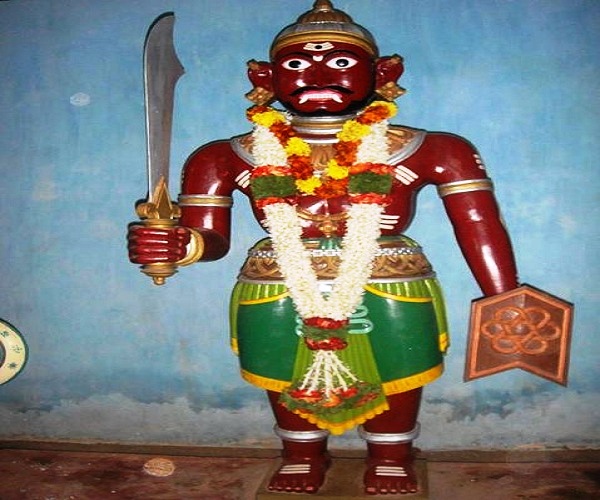
ಪಾಶ್ಚಿಮಾತ್ಯ ಇತಿಹಾಸದಲ್ಲಿ ಪ್ರಪಂಚಕ್ಕೆ ತಿಳಿದಿರುವಂತೆ ಸಾಮಾನ್ಯರು ಮತ್ತು ಅಸಾಮಾನ್ಯರು ಎಂಬ 2 ವರ್ಗಗಳು ಮತ್ತು ವೃತ್ತಿ ಆಧಾರಿತ ವರ್ಗಗಳು ಇದ್ದವು. ಭಾರತದಲ್ಲಿ ಹಲವಾರು ಸ್ವಯಂರಚಿತ ಜಾತಿಗಳು ಪಂಥಗಳು ಇದ್ದು ಇನ್ನು ಕೆಲವು ಪೂರ್ವಜರ ವೃತ್ತಿಯ ಆಧಾರದಲ್ಲಿ ರಚನೆಯಾಗಿವೆ. ಅದೇ ರೀತಿ ಸಾಂಪ್ರಾದಾಯಿಕ ವರ್ಣಗಳ ಆಧಾರದಲ್ಲಿ ಬ್ರಾಹ್ಮಣ, ಕ್ಷತ್ರೀಯ, ಶೂದ್ರ ಎಂಬ ಆಧಾರದಲ್ಲಿ ಸಂಘಟಿತರಾಗಿ ಅನೇಕ ಉಪಜಾತಿಗಳನ್ನು ಸೃಷ್ಟಿಸಲಾಗಿದೆ. ಚತುರ್ವಣಗಳಲ್ಲಿ ಬ್ರಾಹ್ಮಣ ವರ್ಗ ಉನ್ನತ ಸ್ಥಾನಮಾನ ಹೊಂದಿದ್ದು, ಅದರಲ್ಲಿ ಸುಮಾರು 84 ಉಪಜಾತಿಗಳು ಕಂಡುಬರುತ್ತವೆ. ಈ ಸ್ವಯಂರಚಿತ ಪಂಗಡ ಅಥವಾ ಗುಂಪುಗಳಿಗೆ ಮೊದಲು ಪೋರ್ಚುಗೀಸರು casta (ಬೆಂಗಾಲಿ ಭಾಷೆಯ ಕಯಾಸ್ತ ಎಂಬ ಪದದಿಂದ ಆರಿಸಿರುವ ಸಾಧ್ಯತೆ ಇದೆ) ಎಂದು ಹೆಸರಿಸಿ ಭಾರತೀಯರ ಸ್ವಯಂರಚಿತ ಜಾತಿ ಪಂಗಡಗಳ ಬಗ್ಗೆ ಯುರೋಪಿಯನ್ನರಿಗೆ ಪರಿಚಯಿಸಿದರು. ದಕ್ಷಿಣ ಭಾರತದ ಸ್ವಯಂರಚಿತ ಜಾತಿ ಪಂಗಡಗಳಲ್ಲಿ ಎಡಕೈ ಬಲಕೈ ಎಂಬ ಮತ್ತೆರಡು ಒಳಪಂಗಡಗಳು ಇದ್ದವು. ಇಂಗ್ಲಿಷರು ಪೋರ್ಚುಗೀಸರ casta ಪದವನ್ನು caste ಎಂಬ ಹೆಸರಿನಿಂದ ಕರೆದರು. ಪಾಶ್ಚಿಮಾತ್ಯ ಇತಿಹಾಸದಲ್ಲಿ ಭಾರತದ ಜಾತಿ ಪದ್ದತಿಯ ವಿವರಣೆಯೂ ಪ್ರಮುಖ ಪದಕೋಶಗಳಾದ Hobson-Jobson Dictionary , ವಿದೇಶಿ ಶಾಸ್ತ್ರಜ್ಞರು, ಅರಬ್ ಮತ್ತು ಯುರೋಪ್ ನ ಸಮುದ್ರ ವ್ಯಾಪಾರಿಗಳು, ಯುರೋಪ್ ವಸಾಹತು ಸರ್ಕಾರದ ಅಧಿಕಾರಿಗಳು, ಯುರೋಪಿನ ಮಿಶನರಿಗಳ ಬರಹಗಳನ್ನಾಧರಿಸಿ ರಚಿತವಾದ Glossaries of Anglo- Indian words and Phrases , ವಿವಿಧ ಆಯಾಮಗಳಲ್ಲಿ ದಾಖಲಿಸಲ್ಪಟ್ಟ ಪುಸ್ತಕಗಳು, ಮತ್ತು ಶಾಸನಗಳು ಭಾಗಶಃ ಮಾಹಿತಿ ನೀಡುವ ಮೂಲಗಳಾಗಿವೆ. ತುಳುನಾಡಿನ ಇತಿಹಾಸದ ಪುಟಗಳು ಕೂಡಾ ದಾಖಲಾಗಿವೆ. ಆದರೆ ತುಳುನಾಡಿನ ಇತಿಹಾಸದಲ್ಲಿ ತನ್ನದೇ ಛಾಪನ್ನು ಮೂಡಿಸಿ ಮೆರೆದ ಮೇಲಂಟ ಅಥವಾ ಮೆಲಂಟ ಎಂಬ ಪದ ಯಾವುದೇ ಪದಕೋಶಗಳಲ್ಲಿ ಉಲ್ಲೇಖವಿಲ್ಲ.
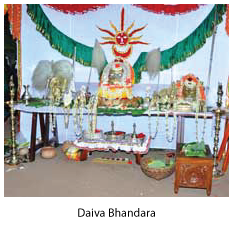
ಮೇಲೆ ತಿಳಿಸಿದಂತೆ ಮೆಲಂಟರ ಬಗ್ಗೆ ಮಾಹಿತಿಯ ಕೊರತೆಯಿದ್ದು, ಮೆಲಂಟರು ಕರಾವಳಿ ಪ್ರದೇಶವಾದ ಕಾಸರಗೋಡು, ಬಂಟ್ವಾಳ, ಪುತ್ತೂರು ಮತ್ತು ಸುಳ್ಯ ಭಾಗದಲ್ಲಿ ತಮ್ಮ ನೆಲೆಯನ್ನು ಹೊಂದಿದ್ದರು. ಇನ್ನೂ ಭೌಗೋಳಿಕ ನಕ್ಷೆಯಲ್ಲಿ ಮೆಲಂಟ ಉಪನಾಮ ಹಲವು ಕಡೆಗಳಲ್ಲಿ ಕಂಡುಬರುತ್ತದೆ. ಇವರು ತುಳುನಾಡಿನ ಮೆಲಂಟರಿಗೆ ಸಂಬಂಧ ಪಟ್ಟಿರುವವರೇ? ಎಂಬ ಬಗ್ಗೆ ಇನ್ನೊಂದು ಅಧ್ಯಯನದ ಅವಶ್ಯಕತೆಯಿದೆ.
ಮೆಲಂಟ ಪದದ ಉತ್ಪತ್ತಿ:
ಮೆಲಂಟ ಅಥವಾ ಮೇಲಂಟ ಪದದ ಮೂಲ “ಮೇಲ್-ಬಂಟ” ಈ ಪದ ಅರ್ಹ ಸೇವಕ , ಹಿಂಬಾಲಕ, ಪ್ರಮುಖ ಸೇವಕ ಅಥವಾ ಸೇವಕರ ಮುಂದಾಳು ಎಂಬರ್ಥ ಹೊಂದಿದೆ. ಇದಲ್ಲದೆ ಯುದ್ದದ ಯಾವುದೇ ಸಂದರ್ಭದಲ್ಲಿ ಹೋರಾಡಬಲ್ಲ ಸೈನಿಕ ಎಂಬ ಅರ್ಥ ಕೂಡಾ ಇದೆ. ಸಿರಿವಂತ ಧನಿಕರ, ಗ್ರಾಮಸಭಾ, ಗೌಡ ಮನೆತನ, ಜಮೀನ್ದಾರ, ರಾಜನ ನೆಚ್ಚಿನ ಆಳುಗಳಾಗಿ ಪ್ರಮುಖ ಹುದ್ದೆಗಳಲ್ಲಿ ಜೀತದಾಳುಗಳಾಗಿ ವೃತ್ತಿ ಮಾಡುತ್ತಿದ್ದರು. ಮೆಲಂಟರು ಹೊಯ್ಸಳರ ಕಾಲದಲ್ಲಿ ತಮ್ಮ ಪ್ರಾಬಲ್ಯವನ್ನು ತುಳುನಾಡಿನಲ್ಲಿ ನೆಲೆಸುವ ಮೂಲಕ ಸ್ಥಾಪಿಸಿರುವ ಸಾಧ್ಯತೆಯಿದೆ. ಇಷ್ಟೇ ಅಲ್ಲದೆ ಗ್ರಾಮ ಸಭಾ ಮತ್ತು ಗೌಡಮನೆತನಗಳು ಹೆಚ್ಚಾಗಿ ಕಂಡುಬರುವ ಹಾಸನ, ಕೊಡಗು ಮುಂತಾದ ಪ್ರದೇಶಗಳಲ್ಲಿ ಈ ವೃತ್ತಿ ಪಂಗಡಗಳು ಚದುರಿ ಹೋಗಿದ್ದವು. ಮಂಗಳೂರು ಮತ್ತು ಕಾಸರಗೋಡಿನಲ್ಲಿ ಆಳುಪರ ಕಾಲದ ಮೆಲಂಟರ ವಂಶಜರು ಈಗಲೂ ಕಂಡುಬರುತ್ತಾರೆ.
ಮೆಲಂಟರಲ್ಲಿ ಉಪಜಾತಿಗಳು:
ಮೆಲಂಟರಲ್ಲಿ ಹಿಂದಿನಿಂದಲೂ 2 ಪಂಗಡಗಳನ್ನು ಕಾಣಬಹುದು. ಇದು ತುಳುನಾಡಿನಲ್ಲಿ ಪ್ರಮುಖ ಎರಡು ಸಮುದಾಯಗಳ ಪ್ರಾಬಲ್ಯದ ಸಂದರ್ಭದಲ್ಲಿ ರಚನೆಯಾಗಿರುವ ಸಾಧ್ಯತೆಯಿದೆ. ಮೊಗವೀರ ಮತ್ತು ಬಂಟ ಪ್ರಾಬಲ್ಯದ ಕಾರಣದಿಂದ ಸಮಾನ ವೃತ್ತಿ ಕೌಶಲ್ಯದ 2 ಮೆಲಂಟ ವರ್ಗಗಳು ತುಳುನಾಡಿನಲ್ಲಿ ಕಂಡು ಬರುತ್ತವೆ. ರಾಜರ ಆಡಳಿತ ಕಾಲದಲ್ಲಿ ಮೆಲಂಟರು ಸಾಮಾನ್ಯವಾಗಿ ಮೀನುಗಾರಿಕೆ, ಪಲ್ಲಕ್ಕಿ ಹೊರುವುದು, ಅಂಗರಕ್ಷಕ ಮತ್ತು ಕೃಷಿ ವೃತ್ತಿಯಲ್ಲಿ ತೊಡಗಿದ್ದರು. ಮೆಲಂಟರಲ್ಲಿ ಮೊಗವೀರ ಮೆಲಂಟ ಮತ್ತು ಬಂಟ ಮೆಲಂಟ ಎಂಬ ಎರಡು ವರ್ಗಗಳಿದ್ದು ಇವೆರಡು ವರ್ಗಗಳು ಒಂದೇ ಪಂಗಡಕ್ಕೆ ಸೇರಿದ್ದವರೇ ಎಂಬುದನ್ನು ವಂಶವಾಹಿ ಅಧ್ಯಯನ ಮಾಡುವ ಮೂಲಕ ತಿಳಿಯಬೇಕಾಗಿದೆ.
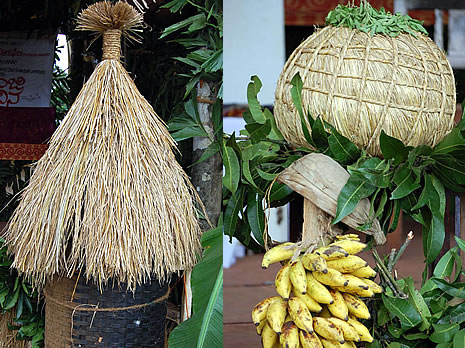
ಮೊಗವೀರರ ಮೆಲಂಟರು:
ಮೀನುಗಾರರ ರಾಜಪ್ರಭುತ್ವ ಕಾಲದಲ್ಲಿ ಪ್ರತಿ ಮೊಗವೀರ ಪಟ್ಟಣದಲ್ಲಿ ಒಂದು ಮೆಲಂಟ ಕುಟುಂಬವನ್ನು ಕ್ಷೌರಿಕರನ್ನಾಗಿ ನೇಮಿಸುತ್ತಿದ್ದರು. ಹೀಗೆ ನೇಮಕವಾದ ಕ್ಷೌರಿಕರು ಮೊಗವೀರರ ಪಟ್ಟಣದ ಸಮುದಾಯದ ಹುಟ್ಟು ಮತ್ತು ಸಾವಿನ ಸಮಯದಲ್ಲಿ ಮಾಡಬೇಕಾದ ಎಲ್ಲ ಧಾರ್ಮಿಕ ಮತ್ತು ಇತರ ವಿಧಿವಿದಾನಗಳನ್ನು ನಿಭಾಯಿಸುವ ಪ್ರಮುಖ ಜವಬ್ದಾರಿ ಇವರ ಮೇಲಿತ್ತು. ಹೆಣ್ಣು ಮಗುವಿನ ಜನನದ 5 ದಿನದ ನಂತರ ಮತ್ತು ಗಂಡು ಮಗು ಜನನದ 7 ದಿನಗಳ ನಂತರ ಮಾಡುವ ಭಸ್ಮ ಸಹಿತ ಶುದ್ದ ಸ್ನಾನ, ಹೆಣ್ಣು ಮಕ್ಕಳ ಮೊದಲ ಋತುಚಕ್ರದ ಸಂದರ್ಭ ಮತ್ತು 12 ದಿನ ನಂತರ ಪವಿತ್ರ ಕಳಸ ಸ್ನಾನ ಮಾಡಿಸುವ ಪ್ರಮುಖ ಕೆಲಸವನ್ನು ಮಾಡುವ ಜವಬ್ದಾರಿ ಮೆಲಂಟ ಕುಟುಂಬದ ಮೇಲಿತ್ತು.
ಇಷ್ಟಲ್ಲದೇ ಗ್ರಾಮಸಭಾದ ಎಲ್ಲಾ ಕಾರ್ಯಕ್ರಮಗಳ ವಿವರಗಳನ್ನು ಗ್ರಾಮಸ್ಥರಿಗೆ ಮುಟ್ಟಿಸುವ ವಕ್ತಾರನಾಗಿ ಕೆಲಸ ಮತ್ತು ಮಂಗಲ ಸ್ನಾನ ಅಥವಾ ಕಳಸ ಸ್ನಾನ ಮಾಡಿಸುವುದಕ್ಕೆ ಬೇಕಾದ ಎಲ್ಲಾ ಸಿದ್ದತೆ ಮತ್ತು ಕೆಲಸಕ್ಕೆ ಬೇಕಾದ ಸೂಕ್ತ ವ್ಯಕ್ತಿಗಳ ನೇಮಕ ಮಾಡಬೇಕಿತ್ತು. ಮಂಗಲ ಸ್ನಾನವೆಂದರೆ ಅಥವಾ ಕಳಸ ಸ್ನಾನವೆಂದರೆ ಪವಿತ್ರ ನೀರನ್ನು ಹೊಸ ಕಳಸ ಅಥವಾ ಮಣ್ಣಿನ ಮಡಕೆಯಿಂದ ಪ್ರೌಢವಸ್ಥೆಗೆ ತಲುಪಿದ ಹೆಣ್ಣು ಮಕ್ಕಳಿಗೆ ಮತ್ತು ಮದುವೆ ಕಾರ್ಯದ ಮುಂಚಿತವಾಗಿ ಶೇಷೆ ಮಹೂರ್ತದಲ್ಲಿ ವಧು/ವರನ ತಲೆಯ ಮೇಲೆ ಸುರಿಯುವುದಾಗಿದೆ.
ಮದುವೆಯ ಸಂದರ್ಭದಲ್ಲಿ ಪಾಲಿಸಬೇಕಾದ ಎಲ್ಲಾ ವಿಧಿ ವಿಧಾನಗಳನ್ನು ಸಂಬಂಧ ಪಟ್ಟವರಿಗೆ ತಿಳಿಸಿ ಆಯಾಯ ವಿಧಿ ವಿಧಾನಗಳನ್ನು ಕೈಗೊಳ್ಳಲು ಮತ್ತು ದಿಬ್ಬಣ ಸಂದರ್ಭ ಸರಧಿಯಲ್ಲಿರಬೇಕಾದ ಪ್ರಮುಖರನ್ನು ನೇಮಿಸುವ ಕಾರ್ಯವನ್ನು ಮೆಲಂಟರು ಮಾಡುತ್ತಿದ್ದರು. ಈ ಪೌರೋಹಿತ್ಯ ಕಾರ್ಯಗಳಿಗೆ ಸಂಬಂಧಪಟ್ಟವರಿಂದ ಸಂಭಾವನೆ ಕೂಡಾ ಪಡೆಯುತ್ತಿದ್ದರು. ಗುರಿಕಾರರು ( ಗ್ರಾಮ ಸಭಾದ ಮುಖ್ಯಸ್ಥ) ಮತ್ತು ಎಲ್ಲಾ ಚುನಾಯಿತ ಸದಸ್ಯರು ಈ ಪುಣ್ಯ ಕಾರ್ಯಗಳು ನಡೆಯುವಾಗ ಕಡ್ಡಾಯವಾಗಿ ಹಾಜರಿರಬೇಕಿತ್ತು.
ಗ್ರಾಮದ ವ್ಯಕ್ತಿಯ ಮರಣ ಸಂದರ್ಭದಲ್ಲಿ ಸಾವಿನ ಅಧಿಕೃತ ಮಾಹಿತಿ ಹೊರಡಿಸುವ ಮತ್ತು ವ್ಯಕ್ತಿಯ ಕುಟುಂಬಸ್ಥರೊಂದಿಗೆ ಇದ್ದು ಶವ ಸಂಸ್ಕಾರದ ಸಂಪೂರ್ಣ ವಿಧಿ ವಿಧಾನವನ್ನು ಸೂಚಿಸಿ ಕಾರ್ಯ ಮಾಡಿಸುತ್ತಿದ್ದರು. ಮರಣ ಭಜನೆ ಹಾಡುವವರನ್ನು ಕರೆಸಿ ಶವ ಯಾತ್ರೆ ನಡೆಸುವ ಮತ್ತು ಅಂತ್ಯ ಸಂಸ್ಕಾರದಿಂದ ಉತ್ತರ ಕ್ರಿಯೆಯವರೆಗಿನ ಎಲ್ಲಾ ಪೌರೋಹಿತ್ಯ ಕಾರ್ಯಗಳನ್ನು ಮೆಲಂಟರು ನಿರ್ವಹಿಸುತ್ತಿದ್ದರು.
ಮೊಗವೀರರಲ್ಲಿ ಈ ಪೌರೋಹಿತ್ಯ ಕಾರ್ಯಗಳನ್ನು ಅವಿಭಜಿತ ದಕ್ಷಿಣ ಕನ್ನಡ ಜಿಲ್ಲೆಯ ದಕ್ಷಿಣ ಭಾಗದಲ್ಲಿ (ಮಂಗಳೂರು ಹೋಬಳಿ) ಮಾತ್ರ ಮೆಲಂಟರು ನಿರ್ವಹಿಸುತ್ತಿದ್ದರು. ಉಡುಪಿ ಭಾಗದಲ್ಲಿ ಮಡಿವಾಳರು ಈ ಕಾರ್ಯಗಳನ್ನು ಮಾಡುತ್ತಿದ್ದರು. ಕ್ಷೌರ ಮತ್ತು ಪೌರೋಹಿತ್ಯ ಕಾರ್ಯಗಳಿಗೆ ಮೀಸಲಾಗಿರದ ಹಲವು ಮೆಲಂಟ ಕುಟುಂಬಗಳು ಮೀನುಗಾರಿಕೆ ಮತ್ತು ಇತರ ವೃತ್ತಿಯಲ್ಲಿ ತೊಡಗಿದ್ದರು. ಇವರ ಮಾತೃಭಾಷೆ ತುಳುವಾಗಿದ್ದು, ಕಾಸರಗೋಡು ಮತ್ತು ಅವಿಭಜಿತ ದಕ್ಷಿಣಕನ್ನಡ ಜಿಲ್ಲೆ ಕೇರಳ ಮತ್ತು ಕರ್ನಾಟಕದ ರಾಜ್ಯಗಳಿಗೆ ಸೇರಿದ ಕಾರಣ ಮಲಯಾಳಿ, ಕನ್ನಡ ಮತ್ತು ತುಳು ಭಾಷಿಗ ಮೆಲಂಟರು ಕಂಡುಬರುತ್ತಾರೆ.
ಹಿಂದೆ ಮಂಗಳೂರಿನ ಉತ್ತರ ಭಾಗದಲ್ಲಿ ಮೇಲಂಟ ಹುಡುಗಿಯನ್ನು ಮೊಗವೀರರು ಹುಡುಗ ಮದುವೆಯಾಗುವುದಕ್ಕೆ ಅವಕಾಶವಿರಲಿಲ್ಲ. ಪರಿಣಾಮವಾಗಿ ಉತ್ತರ ಮಂಗಳೂರಿನ ಹುಡುಗಿಯರನ್ನು ದಕ್ಷಿಣ ಮಂಗಳೂರಿನ ಮೆಲಂಟ ಹುಡುಗರು ಮದುವೆಯಾಗಬೇಕಿತ್ತು. ಮಂಗಳೂರು ಹೋಬಳಿಯಲ್ಲಿ ಯಾವುದೇ ಪಂಕ್ತಿ ಭೇದಗಳು ಇರಲಿಲ್ಲ. ಸಹಭೋಜನಕ್ಕೆ ಅವಕಾಶವಿತ್ತು.

ಗ್ರಾಮದ ದೈವಗಳ ಚಾಕರಿಯಲ್ಲಿ ಮೆಲಂಟರ ಪಾತ್ರ:
ಗ್ರಾಮ ದೈವಗಳಿಗೆ ವರ್ಷಂಪ್ರತಿ ನಡೆಯುವ ಕೋಲ ಅಥವಾ ನೇಮದಲ್ಲಿ ಕಟ್ಟು ಕಟ್ಟಳೆಯ ಪ್ರಕಾರ ಆಯಾಯ ಕರ್ತವ್ಯಗಳನ್ನು ಆಯಾಯ ವ್ಯಕ್ತಿಗಳಿಗೆ ವಹಿಸುವ ಜವಬ್ದಾರಿ ಇತ್ತು. ನೇಮಕ್ಕೆ ಬೇಕಾದ ಸಿದ್ದತೆ, ಚಪ್ಪರ ಅಲಂಕಾರ, ಬಿಂಬ ಇಡಬೇಕಾದ ಸ್ಥಾನದ ಸಿದ್ದತೆ, ಶುಚಿತ್ವ, ತೆಂಗಿನ ಸಿರಿ, ಎಳನೀರು, ಪಿಂಗಾರ, ಔಷಧಿ ಗುಣವುಳ್ಳ ಎಲೆ ಮತ್ತು ಬೇರು, ಪವಿತ್ರ ಮಾವಿನ ಎಲೆ, ಕೇಪುಲ ಹೂ ಸಂಗ್ರಹ ಮುಂತಾದ ಕಾರ್ಯಗಳಿಗೆ ಆಯಾಯ ವ್ಯಕ್ತಿಯನ್ನು ನೇಮಿಸುವ ಜವಬ್ದಾರಿಯಿತ್ತು. ಭಂಡಾರದ ಮನೆಯಿಂದ ಹೊರಡುವ ಬಿಂಬ ಮತ್ತು ಭಂಡಾರದ ಪಲ್ಲಕ್ಕಿ ಹೊರುವ, ಸತ್ತಿಗೆ, ದೀವಟಿಗೆ ಹಿಡಿಯುವ ಮತ್ತು ಇತರ ಕಾರ್ಯ ನಿರ್ವಹಿಸುವವರ ಹೆಸರನ್ನು ಗಟ್ಟಿ ಧನಿಯಲ್ಲಿ ಹೇಳಿ ಆಯಾಯ ಜವಬ್ದಾರಿ ವಹಿಸಿದ ವ್ಯಕ್ತಿಗಳಿಗೆ ಗೌರವ ಸೂಚಿಸುವ ಕೆಲಸ ಮೆಲಂಟರಾದಗಿತ್ತು.
ಮೊಗವೀರ ಮೆಲಂಟರು ಗ್ರಾಮದ ಈ ಪುಣ್ಯ ಕೆಲಸದ ಹುದ್ದೆಗೆ ತಕ್ಕುದಾದ ವೇತನವನ್ನು ಗ್ರಾಮಸಭಾ ನಿರ್ಧರಿಸುತಿತ್ತು. ಮೀನುಗಾರರು ಹಿಡಿದ ಮೀನಿನ ನಿರ್ದಿಷ್ಟ ಪಾಲನ್ನು ಕೂಡಾ ನೀಡಬೇಕಿತ್ತು. ಗ್ರಾಮಸ್ಥರ ಮನೆಗಳಲ್ಲಿ ನಡೆಯುವ ಖಾಸಗಿ ನೇಮ ಅಥವಾ ಇತರ ಕಾರ್ಯಕ್ರಮಗಳಿಗೆ ಪೌರೋಹಿತ್ಯ ಕಾರ್ಯಗಳಿಗೆ ಗೌರವ ಧನ ನೀಡುತ್ತಿದ್ದರು.
ಮೀನುಗಾರಿಕೆಯನ್ನು ಪ್ರಮುಖ ಕಸುಬಾಗಿ ನೆಚ್ಚಿಕೊಂಡ ಮೆಲಂಟ ಕುಟುಂಬಗಳು 1980 ರ ನಂತರ ಮೊಗವೀರ ಮಹಾಜನ ಸಂಘ ಎಂಬ ಸಮಾಜ ಒಕ್ಕೂಟದಲ್ಲಿ ಲೀನವಾಗಿದ್ದಾರೆ.
ಬಂಟರಲ್ಲಿ ಮೆಲಂಟರು:
ಬಂಟರ ಮೆಲಂಟರು ಹೆಚ್ಚಾಗಿ ಕೃಷಿ ಉತ್ಪಾದಕ ಚಟುವಟಿಗಳಲ್ಲಿ ತೊಡಗಿದ್ದರು. ಮೊಗವೀರ ಗ್ರಾಮ ಸಭಾದ ಪದ್ದತಿಯಂತೆ, ಮೆಲಂಟರು ಬಂಟರ ರಾಜಪ್ರಭುತ್ವದ ಪರಿಣಾಮ ಸಮಾನ ವೃತ್ತಿ ( ಕ್ಷೌರ, ಪೌರೋಹಿತ್ಯ) ಮಾಡುತ್ತಿದ್ದವರಾಗಿರಬಹುದೇ…? ಎಂಬ ಬಗ್ಗೆ ಅಧ್ಯಯನವಾಗಬೇಕಿದೆ.
ಮೆಲಂಟ ದೈವಗಳು: ತುಳುನಾಡಿನ ದೈವರಾಧನೆ ಪರಂಪರೆಯಲ್ಲಿ ರಾಜನ್ ದೈವಗಳ ಜೊತೆ ಬಂಟ ದೈವವೊಂದು ಇದ್ದೇ ಇರುತ್ತದೆ. ಬಂಟ ದೈವಗಳಲ್ಲಿ ಬಂಟ, ಮೆಲ್ಬಂಟ ಮೇಲಂಟಾಯ ಎಂಬ ಹೆಸರಿನ ದೈವಗಳನ್ನು ಕಾಣಬಹುದು. ಈ ದೈವದ ಚರಿತ್ರೆ ಕಣಂಜಾರುಬ್ರಹ್ಮ ಲಿಂಗೇಶ್ವರ ಸ್ಥಳ ಪುರಾಣದಲ್ಲಿ ಲಭ್ಯವಿದ್ದು ಶಿವ ಭಕ್ತನಾದ ಮೆಲಂಟ ಮೇಲ್ಬಂಟನಾದ ರೋಚಕ ಕತೆಯಿದೆ. ಕಣಂಜಾರು ಸಂಸ್ಥಾನದ ಭೂಮಿಯನ್ನು ಬಂಗಾರ ಮಾಡಿದ ಶಿವ ಉಪಾಸನೆ ಮತ್ತು ವೇದ ಉಪನಿಷತ್ ಗಳ ತುಳುನಾಡಿಗೆ ತಂದ ಶಿವಗಣದ ನಾಯಕನೆಂದು ಅಥವಾ ಕಿಚ್ಚಿನ ಆಕ್ರಮಣಕಾರಿ ಯೋಧರು, ಎಂಬ ಬಗ್ಗೆ ಉಲ್ಲೇಖವಿದೆ.
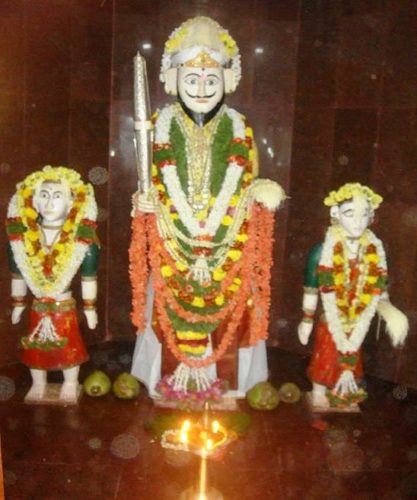
ಬ್ರಾಹ್ಮಣರಲ್ಲಿ ಮೆಲಂಟರು: ಮೆಲಂಟ ಜನಾಂಗದ ಪಂಗಡ ತುಳುನಾಡಿನ ಬ್ರಾಹ್ಮಣರಲ್ಲೂ ಕಂಡುಬರುತ್ತದೆ. ಆಳುಪರ ಕಾಲದಲ್ಲಿ ಬ್ರಾಹ್ಮಣಾಗಮನವಾಯಿತೆಂದು ತುಳುನಾಡಿನ ಇತಿಹಾಸ ಹೇಳುತ್ತದೆ. ಇವರು ತುಳುನಾಡಿನ ಮಣ್ಣಿನ ಫಲವತ್ತತೆ ಹೆಚ್ಚಿಸಿ ಹೆಚ್ಚು ಇಳುವರಿ ತೆಗೆದು ಕೃಷಿಗೆ ಕೊಡುಗೆ ನೀಡಿದರು. ಶಬ್ದಗಂಗಾ ವ್ಯಾಖ್ಯೆಯ ಶಿಲಾ ಶಾಸನದಲ್ಲಿ ಉಡುಪಿಯಲ್ಲಿದ್ದ ಎಲ್ಲಾ ಬ್ರಾಹ್ಮಣರ ಹೆಸರನ್ನು ನೀಡಲಾಗಿದೆ. ಈ ಶಿಲಾಶಾಸನದಲ್ಲಿ ಮೆಲಂಟ ಹೆಸರು ಕಂಡುಬರುತ್ತದೆ. ವರಂಬಳ್ಳಿ, ಉಗ್ರಪಲ್ಲಿ, ಅಡಿಗ, ಹೆಬ್ಬಾರ್, ಅಸ್ರಣ್ಣ, ಬಲ್ಲಾಳ, ಬಸ್ರೂರ, ಬಾಯಿರಿ, ಹಂದೆ, ಹತ್ವಾರ, ಗೋಳಿ, ಬಟ್ಟ, ಹೆರಾಲೆ, ಹೊಳ್ಳ, ಜೋಯಿಸ, ಕಲ್ಕೂರ, ಕಾರಂತ, ಮಂಜ, ಮಯ್ಯ, ಮೆಲಂಟ , ನಾವಡ, ಪುರಾಣಿಕ, ತಂತ್ರಿ, ಸೋಮಯಾಜಿ, ಉರಲ, ಮಧ್ಯಸ್ತ, ವೈದ್ಯ, ತುಂಗ, ಉಪಾಧ್ಯಾಯ, ನಿಡಂಬುರ ಮುಂತಾದ ಹೆಸರುಗಳ ಉಲ್ಲೇಖವಿದೆ.

ಉಪ ಸಂಹಾರ: ಮೆಲಂಟರ ಬಗ್ಗೆ ಇನ್ನಷ್ಟು ಅಧ್ಯಯನದ ಅವಶ್ಯಕತೆಯಿದ್ದು ಮೇಲೆ ತಿಳಿಸಿರುವ ಮಾಹಿತಿ ಜನಪದ ಇತಿಹಾಸ ಮತ್ತು ದಾಖಲೆಗಳ ಆಧಾರದಲ್ಲಿ ನೀಡಲಾಗಿದೆ. ಈ ವಿಚಾರಕ್ಕೆ ಸಂಬಂಧಿಸಿದಂತೆ ಓದುಗ ಮಿತ್ರರು ಮಾಹಿತಿಯಿದ್ದರೆ ನೀಡಬಹುದು. ಹಾಗೆಯೇ ಭಂಡಾರಿಗಳಿಗೂ ಮೇಲು ಬಂಟ ಮೇಲಂಟರಿಗೂ ಸಂಬಂಧವಿದೆಯೇ ಎಂಬುದರ ಬಗ್ಗೆ ಅಧ್ಯಯನದ ಅವಶ್ಯಕತೆಯಿದೆ. ಹೆಚ್ಚಿನ ಹಳ್ಳಿಗಳಲ್ಲಿ ತಳ ಸಮುದಾಯದ ( ಮೊಗೆರ, ಹರಿಜನರು ಮತ್ತು ಇತರರು) ಹಿಂದೆ ಭಂಡಾರಿಗಳಿಗೆ ಮೆಲಂಟರು ಎನ್ನುತ್ತಿದ್ದರು. ಜೈನ ಮತ್ತು ಬ್ರಾಹ್ಮಣ ಬಂಟ ಸಮುದಾಯಗಳು ಭಂಡಾರಿ ಎಂಬ ಹೆಸರಿನಿಂದ ಕರೆಯುತ್ತಿದ್ದರು. ಈ ಬಗ್ಗೆ ತಿಳಿದಿರುವವರು ಮಾಹಿತಿ ನೀಡಿ ಅಧ್ಯಯನಕ್ಕೆ ಸಹಕರಿಸಿ.
ಲೇಖನ: ಪ್ರಶಾಂತ ಭಂಡಾರಿ ಕಾರ್ಕಳ (ಕನ್ನಡ)
ಮೂಲ ಲೇಖನ : ಹೊಸಬೆಟ್ಟು ವಿಶ್ವನಾಥ ಶೆಟ್ಟಿ ಪುಣೆ (ಇಂಗ್ಲಿಷ್), ತುಳು ರಿಸರ್ಚ್
English Version:
Melānta
In history, western world knows only two divisions as commoners and nobles, despite the professions they follow. We, in India, have many artificial caste distinctions or divisions, based on hereditary occupations of individual professional sometimes -groupable under the traditional classes of Kshatriya, Vaishya and Shudra. The Brahmans, who are in highest rung of Vaidika Chaturvarna, have also divisions, supposed to be 84 or so. These artificial divisions, known in Portuguese language as ‘Casta’ (probably taking cue from Kayastha of Bengali), are made known to Europe by Portuguese. Further, in Southern India, there are high (right-hand) and low (left hand) divisions within a caste itself. The English borrowed this word ‘casta’ and invented the word ‘caste’. The description of castes makes an interesting reading in Hobson-Jobson Dictionary (Pages 170 t0 173). Glossaries of Anglo-Indian words and phrases are gleaned (and edited by the Authors) from the writings of foreign explorers, Arabian and European marine traders, colonial officers and European missionaries. Some books record skewed views, skirting a subject partially, but they give some insight into the history of Tulu Nadu. There is no entry in this Dictionary for ‘Melanta or Melānta’, who were very much a vibrant social group in Tuluva history.
With this introduction, we try to describe the less known story of Melāntas, who are spread in coastal areas upto Kasargod and interior places like Bantwal, Puttur, Sulya, etc.
In global map, the Melanta as a surname is widely and thickly spread. It is a matter of another study whether they relate someway or not to the Tuluva Melaantas.
Etymology
‘Melanta or Melānta’ etymologically means ‘Mel-banta’ (ಮೇಲ್ ಬಂಟ), i.e. a handy-servant or attendant or forefront servant or a warrior in any movement. He worked as a serf to a grandee, a village sabha (societal gathering), a feudal chieftain or a king.
Presumably, they might have come from Hassan and Kodagu with Gouda Chieftains of Hoysala Kingdom when they conquered coastal areas which were under Alupas. They are mostly concentrated in coastal villages beyond Mangaluru, say Kasaragod Taluk of South Kanara and now Kasargod District of Kerala after the State reorganisation in 1956, based on concentration of language-speakers. The border areas are normally an area of bilingual speakers. It is also likely they followed the legendary Bhargava Rama during his sojourn to Tulu Nadu from North.
Sub-community
Presently the Melānta is a predominant sub-community within Mogaveeras and Bunts, doing menial jobs. They pursue ancestral profession of fishing, palanquin carrying, body-guards and farming. What is ethnical link between Mogaveera Melanta and Bunts Melanta? It is a matter fit for future genetic studies.
Mogaveera Melānta
Each Mogaveera Patna used to have a Melānta to do hair-cutting and shaving for the community people (Now the system is stopped after absorbing them into main stream of Mogaveeras).
Further, he was supposed to perform all types of religious rituals from birth to death. This is an exercise of purification – on child birth, first menstruation of a girl etc. He was to act as messenger of the village Sabha to inform activities of the village to householders and the duties assigned to individual householders (in rotation in the case of large villages) in matters of mangala snana or kalasa snana, i.e. pouring of sacred water in new and small earthen pots (= mutti) on the head of a girl on attaining puberty or during ‘sese muhurta’ of bride or bridegroom in the case of marriage. He informs the households (who are on rotational list) to accompany marriage procession (dibbana) of a girl. The custom is similar to what is practiced traditionally by other castes of Tulu Nadu. He was paid by individual household for this priestly service. Community Gurikaras (Village traditional leader) and elected members of Village Committees must be present to see through the customs.
In the case of death, he proclaims the death and turn of the households to be present for assisting in funeral work. He also informs the members of the Bhajana Mandali, to sing devotional songs during funeral procession. He is the priest in all last rites of a departed soul.
This practice was in vogue mostly in southern part of Dakshina Kannada (Mangalore Hobali). In Udupi side, Mogaveeras use Madivalas for such rituals. Melānta families, other than the family anointed for the ceremonial duties, are engaged in fishing profession.
They speak Tulu. Those who are of erstwhile Kasaragod Taluk of South Kanara speak Tulu or a mixture of Tulu-Kannada-Malayalam at home and study in Kannada schools whereas after State-reorganisation, they study Malayalam in schools also. Region up to Northern Part of Malabar was called as Tulu Nadu during the history. So, people identify themselves with Tulu Nadu, i.e. extended Karnataka.
Earlier, it was a social taboo on a Mogaveera boy marrying a Melānta girl. As a result, Melānta girls North of Mangaluru were married of to Melānta boys South of Mangaluru.
I was a privy to a funny situation, which arose in 1956. Panambur and Tannirbhavi villages were liberal and there was less discrimination. Melāntas were allowed ‘saha bhojana or paNkti Bhojana (Eating together, sitting with each other in a row) there. This was not liked by some villages. In 1956, a girl from our village (precisely, of Heggade House) married off to a Tannirbhavi boy. Fearing a clash in the ‘saha-bhojana’, the village committee ordered that one male per house should accompany the ‘dibbana‘ (marriage Procession, going on foot in those days). It would be a big Dibbana as Hosabettu is a big village. My eldest brother asked me to go as he was busy. I was forced to go. He gave his vastee. I felt uncomfortable with the slipping vastee as I was not used to wear mundu or vastee. Luckily, no untoward things happened there.
During annual celebration of Kola or Nema of the village deity, the Melānta would trumpet or proclaim loudly the duties assigned to each household. Each household must give ‘siri’ (tender coconut fronds to be used for preparing sacred dress of Divine Spirit Dancers), tender coconuts, pingara (inflorescence flower of arecanut tree). He announces the Households appointed for bringing sacred leaves (mango leaves, kepula flower and leaves and other medicinal leaves and flowers for decoration and erection of pandals over and around the sacred seat of Daiva Bimbas, persons to be present during BhandaraProcession from Bhandara House to the Shrines of Daivas, and holders of Hilalu (Stand with a cup for holding lighted oiled-cloth). (Read Post-250/20.08.21010 – From Olasari to Varasari on annual worship ceremony of Divine Spirits)
Melānta on village duty used to get a part of fish catch, besides the wages fixed by the village sabha. He gets paid by householders in kind and money for the priestly work done at households.
Now, Melāntas are absorbed into Mogaveera Community (some time in 1980’s), thanks to the sagacity of leadership of Community Federation, the Mogaveera Mahajana Sangha.
Melānta of Bunts
They are engaged in farming as tenants. We are not aware whether they used to do the duties as Mogaveera Melāntas.
Melanta Daivas
In Tulu Daivaradhane customs, there is always a ‘Banta (=attendant) Daiva‘ to each principal Daiva. They are called as Banta,Melanta or Melantāya. It is supposed that they are ‘Ganda Ganas’ (Valient warriors or fierce fighters) always in the vanguard of the army of Lord Shiva.
Melāntas among Brahmins
Melanta Sept is also noticed among the Brahmin community. It is said that Brahmins arrived in Tulu Nadu right from the beginning of Alupa rule. They were given gifts of land to increase the fertility of land by using it for cultivation. ‘Shodganga’ quotes, from an Epigraph, the names of Brahmin clans of Udupi. They are: Varamballi, Ungrapalli, Adiga, Hebbara, Asranna, Ballala, Basura, Bayiri, Hande, Hathwara, Goli, Bhatta, Herale, Holla, Joisa, Kalkura, Karantha, Kedilaya, Manja, Mayya, Melanta, Navada, Puranika, Tantri, Somayaji, Urala, Madhyastha, Vaidya, Tunga, Upadhyaya, Nidambura, etc.
Conclusion
The subject ‘Melānta’ needs more study. This article is based on readily available information – verbal and on record. Readers are welcome to add additional information available at their reach.
-Hosabettu Vishwanath, Pune
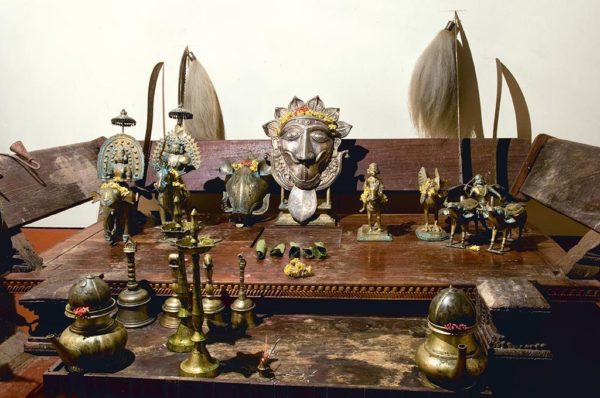
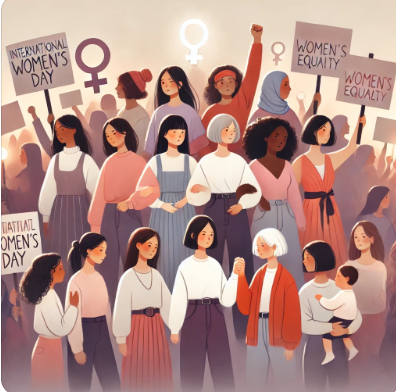
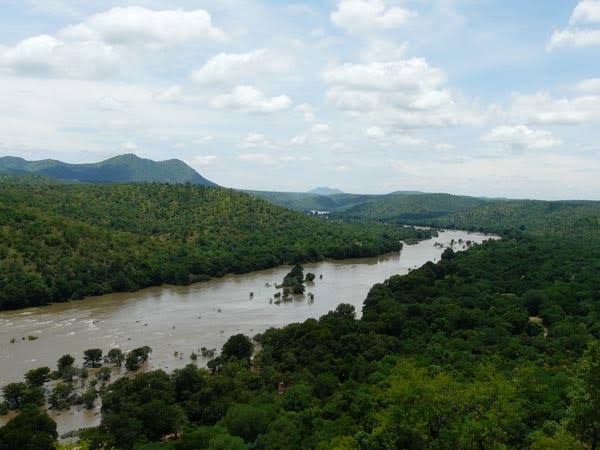
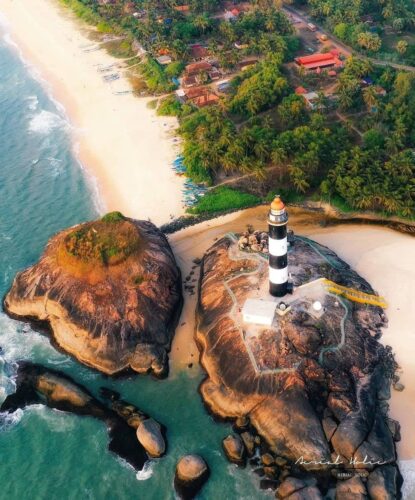
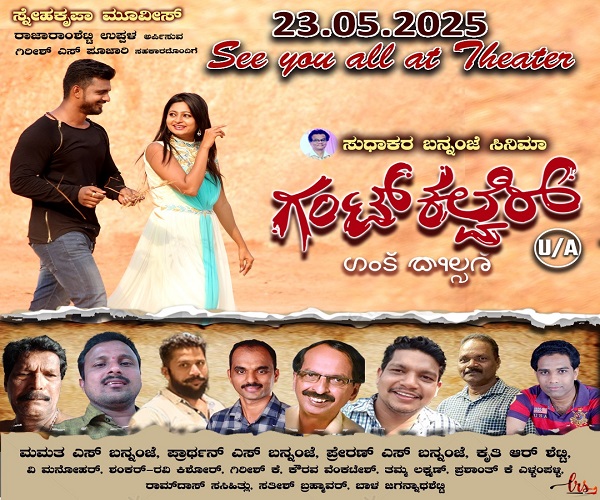
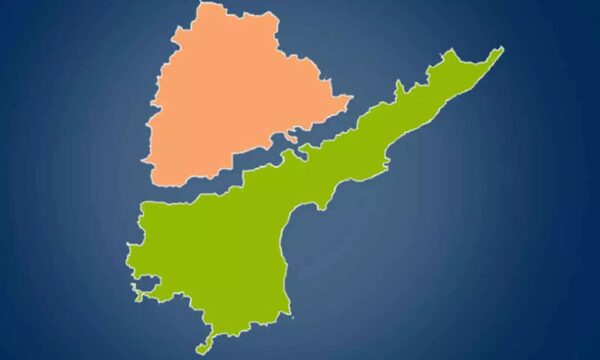
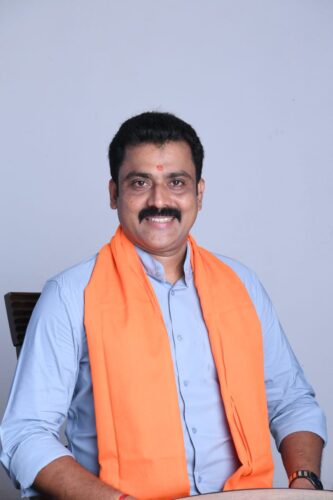
There is no refference material added to your article.
Please give the refference.
Refer this blog
https://tulu-research.blogspot.com/?m=1